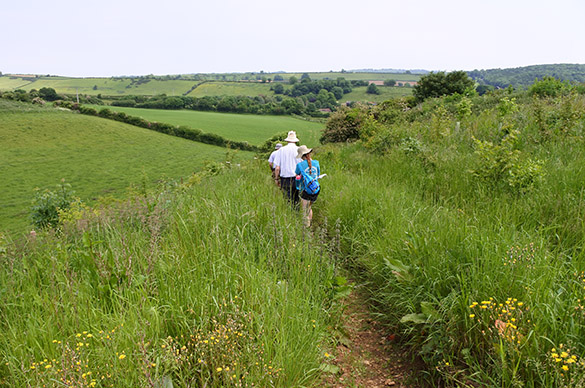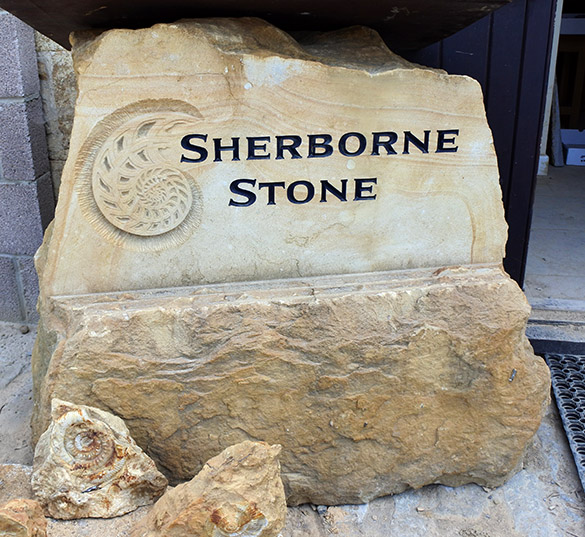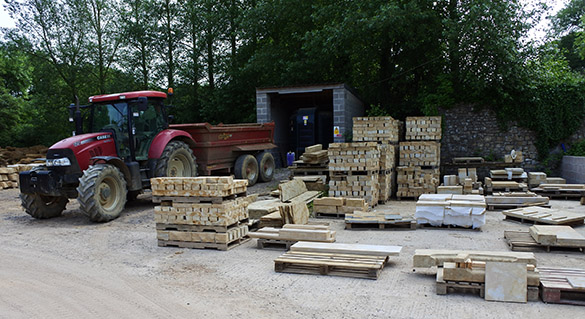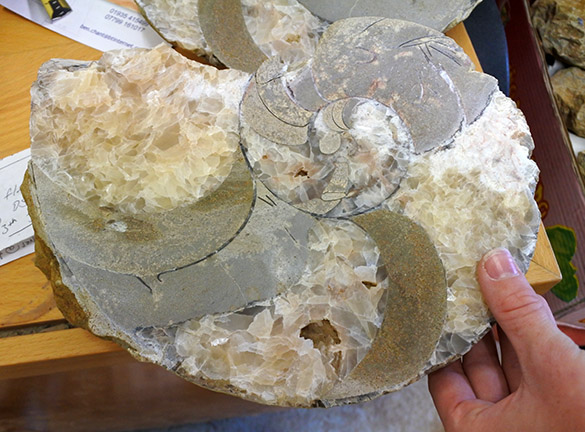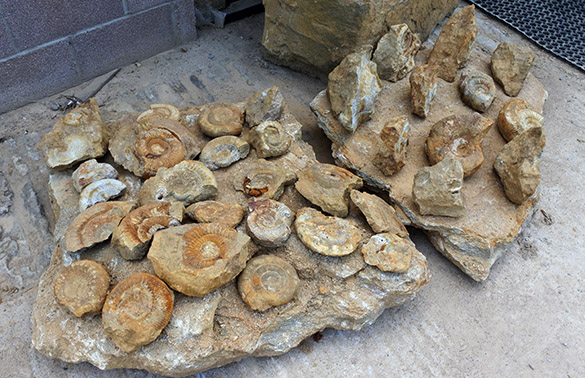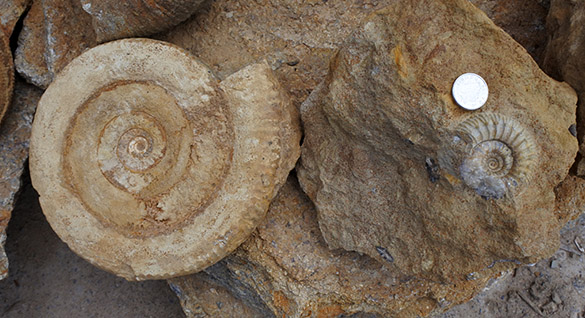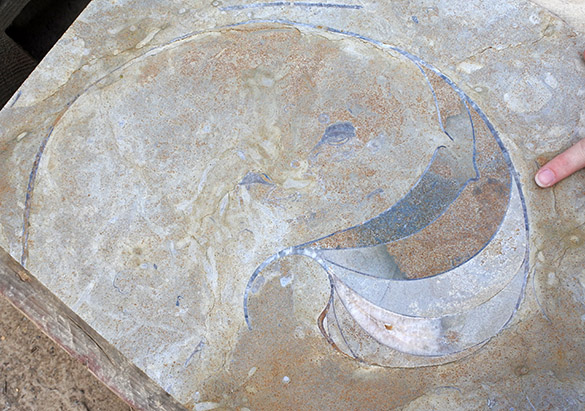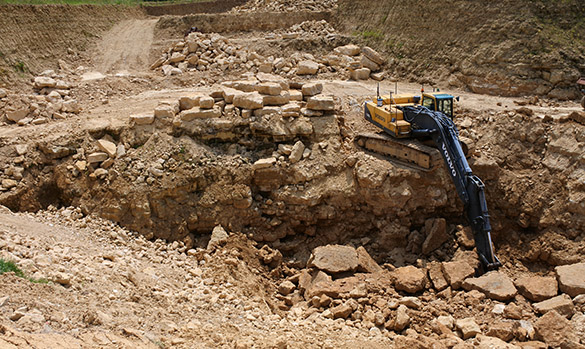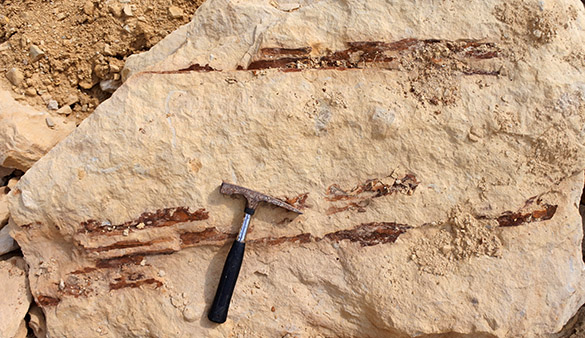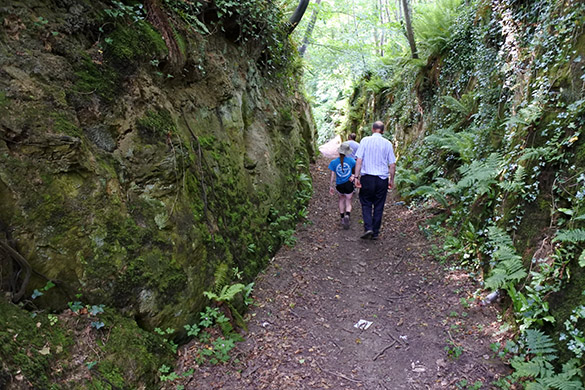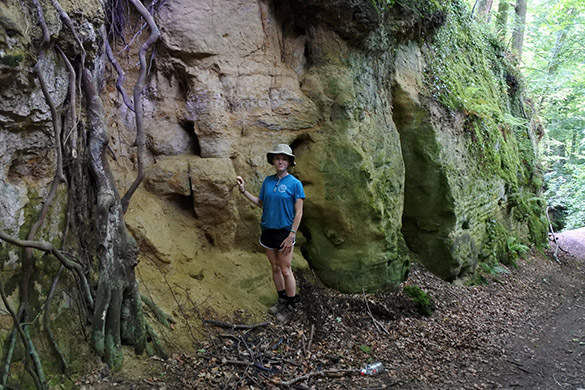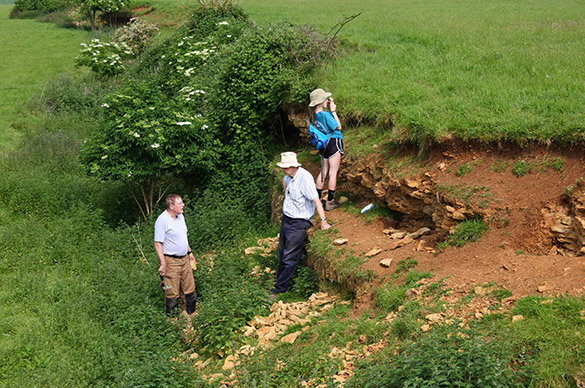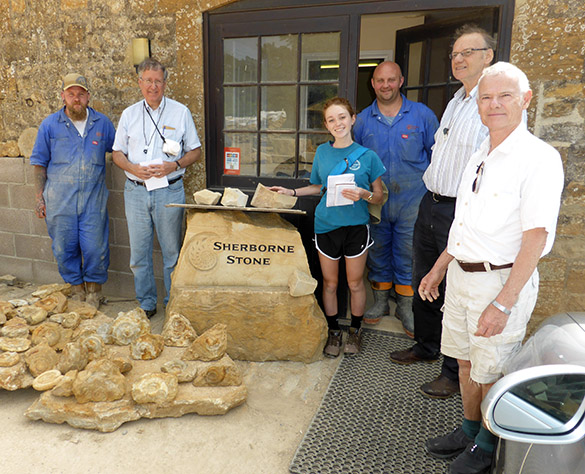 Sherborne, England — Another gorgeous day of exploring in the Middle Jurassic of southern England. The weather and the companions could not be better. Today was our last day of reconnaissance and tomorrow Cassidy Jester (’17) begins her Independent Study project fieldwork. Exactly what that project will be will be decided in the morning. So many possibilities. No doubt Tim Palmer and Cassidy are thinking about them as they walk the beach at Burton Bradstock (above).
Sherborne, England — Another gorgeous day of exploring in the Middle Jurassic of southern England. The weather and the companions could not be better. Today was our last day of reconnaissance and tomorrow Cassidy Jester (’17) begins her Independent Study project fieldwork. Exactly what that project will be will be decided in the morning. So many possibilities. No doubt Tim Palmer and Cassidy are thinking about them as they walk the beach at Burton Bradstock (above).
 We began the day at Coombe Quarry near Maperton, Dorset. There we saw an interesting combination of snuffboxes (essentially iron-rich, fossiliferous oncoids), a carbonate hardground, and microbially-generated layers of iron oxides. Cassidy is standing above on the top of the most interesting unit.
We began the day at Coombe Quarry near Maperton, Dorset. There we saw an interesting combination of snuffboxes (essentially iron-rich, fossiliferous oncoids), a carbonate hardground, and microbially-generated layers of iron oxides. Cassidy is standing above on the top of the most interesting unit.
 Above is a close view of the Maperton carbonate hardground surface (light-colored) perforated by Gastrochaenolites borings with the microbial iron oxides (darker and brownish) filling in the low spaces. The snuffboxes are just below. These are complex units that are highly condensed, so a few centimeters of section represents multiple depositional events.
Above is a close view of the Maperton carbonate hardground surface (light-colored) perforated by Gastrochaenolites borings with the microbial iron oxides (darker and brownish) filling in the low spaces. The snuffboxes are just below. These are complex units that are highly condensed, so a few centimeters of section represents multiple depositional events.
 We next traveled to Hive Beach at Burton Bradstock along the English Channel (see the topmost image). Here we found blocks of the Inferior Oolite that had fallen down to the beach, enabling us to see the stratigraphy in separate bits. In this limestone cross-section, Cassidy’s hand is at the snuffbox level. The snuffboxes are the elliptical, layered brown objects.
We next traveled to Hive Beach at Burton Bradstock along the English Channel (see the topmost image). Here we found blocks of the Inferior Oolite that had fallen down to the beach, enabling us to see the stratigraphy in separate bits. In this limestone cross-section, Cassidy’s hand is at the snuffbox level. The snuffboxes are the elliptical, layered brown objects.
 The layered object above is a snuffbox in cross-section. The center is a bit of limestone that served as the nucleus on which the brown microbial layers grew. The snuffbox occasionally was overturned by currents, allowing the layers to grow completely around the nucleus. These have been called snuffboxes since the 19th century because the inner limestone bit often weathered out, leaving the iron-rich parts looking a bit like a flat box to carry snuff.
The layered object above is a snuffbox in cross-section. The center is a bit of limestone that served as the nucleus on which the brown microbial layers grew. The snuffbox occasionally was overturned by currents, allowing the layers to grow completely around the nucleus. These have been called snuffboxes since the 19th century because the inner limestone bit often weathered out, leaving the iron-rich parts looking a bit like a flat box to carry snuff.
 At Burton Bradstock we also saw this very unusual rock along the beach. It has a limestone matrix and very diverse clasts in seemingly random orientations. The clasts include large red blocks (Cassidy has her hand on one), ammonites, and snuffboxes (including the one shown earlier).
At Burton Bradstock we also saw this very unusual rock along the beach. It has a limestone matrix and very diverse clasts in seemingly random orientations. The clasts include large red blocks (Cassidy has her hand on one), ammonites, and snuffboxes (including the one shown earlier).
 In this closer view of what is thought to be a neptunian dike rock, Cassidy’s finger is on an ammonite in cross-section. There are many iron-rich layers and calcite-filled veins. This rock appears to have been formed from sediment collecting in a large fissure that cut across rock layers.
In this closer view of what is thought to be a neptunian dike rock, Cassidy’s finger is on an ammonite in cross-section. There are many iron-rich layers and calcite-filled veins. This rock appears to have been formed from sediment collecting in a large fissure that cut across rock layers.
 These odd flat-bottomed clasts were quite mysterious to us until Tim nailed them as fragments of a stromatactis layer. Still a mystery, though, where these clasts came from.
These odd flat-bottomed clasts were quite mysterious to us until Tim nailed them as fragments of a stromatactis layer. Still a mystery, though, where these clasts came from.
 Our last stop of the day was at Horn Park Quarry, a gated natural reserve, reputed to be the smallest in the United Kingdom. The whole of the Inferior Oolite is exposed here, including this remarkable flat surface that we’re told extends for miles.
Our last stop of the day was at Horn Park Quarry, a gated natural reserve, reputed to be the smallest in the United Kingdom. The whole of the Inferior Oolite is exposed here, including this remarkable flat surface that we’re told extends for miles.
 The surface is almost perfectly flat, and it truncates thousands of fossils, including this ammonite.
The surface is almost perfectly flat, and it truncates thousands of fossils, including this ammonite.
 And these belemnites with no preferred orientation.
And these belemnites with no preferred orientation.
 The site was at one time heavily exploited for its ammonites, some of which are now preserved under this locked cage.
The site was at one time heavily exploited for its ammonites, some of which are now preserved under this locked cage.
 Tim seems despondent because we have no strong explanation for the origin of this remarkable surface. We think it was likely formed by abrasion processes, but how is unclear. There are numerous such surfaces in this small section, compounding the mystery.
Tim seems despondent because we have no strong explanation for the origin of this remarkable surface. We think it was likely formed by abrasion processes, but how is unclear. There are numerous such surfaces in this small section, compounding the mystery.
Now Cassidy decides what to do!
 Bristol to London, England — Cassidy Jester (’17) and I returned to the Bristol train station (above) on our way to London. We grabbed a smidgen of geology along the way:
Bristol to London, England — Cassidy Jester (’17) and I returned to the Bristol train station (above) on our way to London. We grabbed a smidgen of geology along the way: This common stone in the train station looked familiar. It turns out to be the same Triassic wadi deposit I saw with Tim Palmer in Wales last year. The gray clasts in this breccia are from the Carboniferous Limestone.
This common stone in the train station looked familiar. It turns out to be the same Triassic wadi deposit I saw with Tim Palmer in Wales last year. The gray clasts in this breccia are from the Carboniferous Limestone. Here is Cassidy ready to board the train for London. All her fieldwork is done and she is soon to be off exploring England, Scotland and Wales with her boyfriend. Nice job, Cassidy!
Here is Cassidy ready to board the train for London. All her fieldwork is done and she is soon to be off exploring England, Scotland and Wales with her boyfriend. Nice job, Cassidy! Here is my destination in London: the fantastic Natural History Museum, seen here from Exhibition Road. A cathedral of science.
Here is my destination in London: the fantastic Natural History Museum, seen here from Exhibition Road. A cathedral of science. And the mighty Paul Taylor sits in the heart of the museum, surrounded by bryozoans. He has been my very good friend since 1985. I am fortunate again this summer to work with Paul and Tim Palmer — the Three Amigos for 31 years. I will also be working this week with Consuelo Sendino.
And the mighty Paul Taylor sits in the heart of the museum, surrounded by bryozoans. He has been my very good friend since 1985. I am fortunate again this summer to work with Paul and Tim Palmer — the Three Amigos for 31 years. I will also be working this week with Consuelo Sendino. Finally, here are my lodgings at 66 Winchendon Road, Fulham, London. I’ve rented the top room (with the roof windows) for the week I’m here.
Finally, here are my lodgings at 66 Winchendon Road, Fulham, London. I’ve rented the top room (with the roof windows) for the week I’m here.


















































